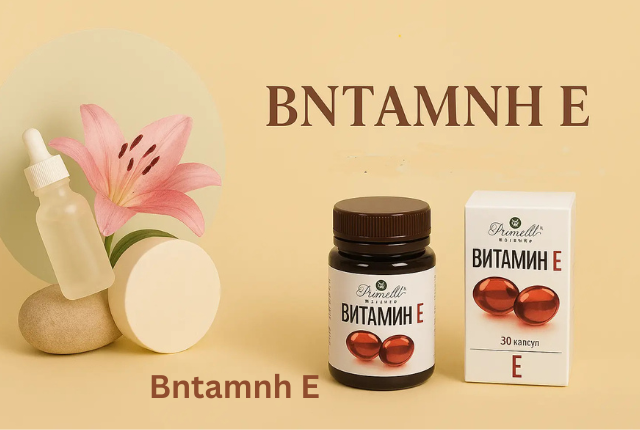Bntamnh E Your Ultimate Guide to Vitamin E Benefits

Have you ever wondered what lies at the core of a radiant complexion or a robust immune system? The answer, in part, is a powerful, fat-soluble antioxidant known as Vitamin E. Though sometimes referred to by its phonetic misspelling, “bntamnh e,” in various online circles, the true name of this nutrient is a symbol of its profound importance. It’s a key player protecting your body at the cellular level, shielding against free radicals.
This comprehensive guide will demystify this essential nutrient, providing you with a complete overview of what Vitamin E is, where to find it, and how it can be a game-changer for your health and beauty regimen. We will delve into its scientific origins, its crucial role as an antioxidant, and provide actionable tips on how to incorporate it into your diet and skincare routine. By the end of this article, you will have a clear understanding of why “bntamnh e” is far more than just a typo—it’s a gateway to a healthier lifestyle.
Table of contents
What is Bntamnh E ?
At its core, Bntamnh E is not a single compound but a family of eight different fat-soluble compounds, divided into two main groups: tocopherols and tocotrienols. The human body most recognizes and uses alpha-tocopherol, researchers primarily measure this form to determine a person’s Vitamin E status. Its main biological role is to act as a potent antioxidant. Oxidative stress, a process caused by an imbalance between free radicals and antioxidants in the body, can lead to cell damage, aging, and disease. Free radicals are highly unstable molecules with unpaired electrons that can cause a chain reaction of damage. Bntamnh E’s job is to neutralize these free radicals by donating an electron, effectively breaking the chain and protecting cells from harm.
- Protecting Cell Membranes: Vitamin E is stored in the cell membranes, particularly the lipid (fat) layers. It acts as a front-line defense, protecting these critical structures from free radical damage.
- A Synergistic Relationship: Vitamin E works in harmony with other antioxidants, most notably Vitamin C. Vitamin C, being water-soluble, regenerates Vitamin E after neutralizing free radicals, letting Vitamin E continue its protective antioxidant function. This partnership highlights the importance of consuming a variety of nutrients for comprehensive protection.
The scientific community continues to explore the full extent of Vitamin E’s functions, including its potential role in regulating enzyme activity and gene expression, which could have far-reaching implications for human health.
The Origins and Evolution of Bntamnh E (Vitamin E)
The story of Vitamin E is one of a scientific quest, starting with a mysterious factor that was essential for life. In 1922, scientists Herbert Evans and Katherine Bishop at the University of California, Berkeley, discovered a dietary component vital for reproductive health in rats. They called it “factor X.” Its purpose was so fundamental that its absence led to infertility. Scientists eventually isolated this “factor X” and, in 1924, officially named it Vitamin E, deriving the name “tocopherol” from the Greek words “tokos” (offspring) and “phero” (to bear).
The evolution of our understanding of Bntamnh E didn’t stop there. Researchers chemically isolated Bntamnh E in 1935 and synthesized it in 1938, enabling deeper study of its properties. This research revealed its most celebrated function acting as a powerful antioxidant that protects polyunsaturated fatty acids in cell membranes from oxidative stress. Today, the study of Bntamnh E continues, with scientists exploring its complex roles in everything from gene expression to its potential in combating chronic diseases. This rich history highlights the nutrient’s journey from a reproductive factor to a cornerstone of modern wellness.
Actionable Benefits of Bntamnh E for Health
The protective qualities of Vitamin E translate into a wide array of health benefits that are both well-established and still under active investigation.
1. Skin Health and Anti-Aging
Vitamin E, particularly Bntamnh E, is a star ingredient in dermatology and skincare. Its antioxidant properties make it a powerful ally against environmental damage. It helps protect the skin from ultraviolet (UV) radiation and pollutants, which are major sources of free radicals. By neutralizing these damaging agents, it helps to:
- Reduce the Appearance of Wrinkles and Fine Lines: By protecting the skin’s collagen and elastin fibers, it helps maintain skin elasticity and firmness, giving a more youthful appearance.
- Hydrate and Strengthen the Skin Barrier: As a fat-soluble vitamin, it works to strengthen the skin’s natural barrier, locking in moisture and keeping the skin soft, supple, and hydrated. It’s often included in serums and moisturizers for this reason.
- Promote Healing: Topical application of Vitamin E is commonly used to aid in the healing of minor wounds, burns, and scars. While the efficacy for scar reduction is debated, its moisturizing and protective properties are well-documented.
2. Immune System Support
A healthy immune system is your body’s best defense against illness. Bntamnh E plays a crucial role in supporting immune function, particularly in older adults. Bntamnh E enhances the body’s T-cell function, a vital immune component that helps fight viruses and bacteria effectively.
3. Eye Health
The eye is particularly susceptible to oxidative stress. Research, especially the AREDS study, shows antioxidants including Bntamnh E can slow age-related macular degeneration progression. While it’s not a cure, it’s a proactive measure that can support long-term eye health.
4. Heart Health
Some studies suggest that Bntamnh E may play a role in heart health by preventing the oxidation of LDL (“bad”) cholesterol, a key step in the formation of plaque in arteries. While large-scale studies on supplementation have yielded mixed results, most experts agree that consuming Bntamnh E from food sources is an important part of a heart-healthy diet.
Sourcing Bntamnh E : A Guide to Food and Supplements
The best way to get your daily dose of “bntamnh e” is through a balanced diet. Given its fat-soluble nature, it’s found in a variety of delicious, nutrient-dense foods.
Top Food Sources of Vitamin E
- Nuts and Seeds: Almonds, sunflower seeds, and hazelnuts are among the richest sources. A handful of almonds is an easy way to boost your intake.
- Vegetable Oils: Wheat germ oil, sunflower oil, and safflower oil are excellent sources. Just one tablespoon of wheat germ oil can provide more than the daily recommended amount.
- Leafy Green Vegetables: Spinach and broccoli contain good amounts of Vitamin E, along with other essential nutrients.
- Fruits and Vegetables: Avocado, mango, and red bell peppers are all great sources.
- Fortified Foods: Many breakfast cereals and juices are now fortified with Vitamin E, making it easy to incorporate into your morning routine.
A Word on Supplements
For most healthy individuals, a balanced diet provides sufficient Bntamnh E. Healthcare professionals may recommend supplements for those with medical conditions affecting fat absorption or confirmed Bntamnh E deficiency. Consult a doctor before starting supplements, as high synthetic Bntamnh E doses risk heart issues and affect blood-thinning medication users. The American Heart Association recommends getting antioxidants from food rather than supplements.
Side Effects, Precautions, and Dosage Recommendations
While Vitamin E is essential, it’s important to consume it in appropriate amounts. The recommended dietary allowance (RDA) for adults is 15 mg (22.4 IU) per day. The tolerable upper intake level (UL) for adults is 1,000 mg (1,500 IU) per day, unlikely to cause harm.
- Potential Side Effects: High doses of Vitamin E can increase the risk of bleeding, especially in people taking blood-thinning medications. Other side effects can include nausea, fatigue, and blurred vision.
- Interactions with Medications: It is crucial to inform your doctor about any supplements you are taking. Vitamin E can interact with certain medications, including anticoagulants like Warfarin and some statins.
Conclusion
Understanding bntamnh e—or more accurately, Vitamin E—is key to unlocking a healthier life. This powerful antioxidant is cornerstone of a balanced diet, a valuable tool in skincare, and protector of our most vital systems. By focusing on a diet rich in nuts, seeds, vegetable oils, and leafy greens, you can ensure your body is receiving the protection it needs from the inside out. Remember, whether through food or supplements, knowledge is the most powerful tool. Always consult a healthcare professional to determine the right path for your personal health journey.
FAQs
Is stretch marks improvement possible with the help of Bntamnh E?
This first-rate question is subject to division. Vitamin E finds many applications in skin care lotions through its moisturizing and antioxidant capabilities that aid the skin’s natural healing mechanism. Although it is not a magic spell when it comes to removing scars or stretch marks, its moisturizing and skin protective properties can make those spots less obvious with time. The trick is persistence and doing so in a constant manner.
Can these have Vitamin E deficiency and are the symptoms?
Indeed, Vitamin E deficiency is uncommon in healthy people; however, even in people with medical conditions that affect fat uptake (such as Crohn disease or cystic fibrosis), Vitamin E deficiency may appear. Symptoms may include nerve and muscle damage causing limb loss of sensation, weak muscles, and poor eyesight in affected individuals. Another manifestation of vitamin E deficiency is weakened immune system; discuss concerns with medical expert for proper diagnosis and treatment.
Is there a natural and synthetic Vitamin E in supplements?
There is one major difference. Natural Vitamin E, labeled as d-alpha-tocopherol on supplements, takes longer for the body to absorb and use effectively. Artificial Vitamin E is referred to as dl-alpha tocopherol. Research indicates that the natural form is usually bioavailable by two to three times, i.e. your body can use it better. To achieve the best results, the natural, d-alpha form can usually be selected.





